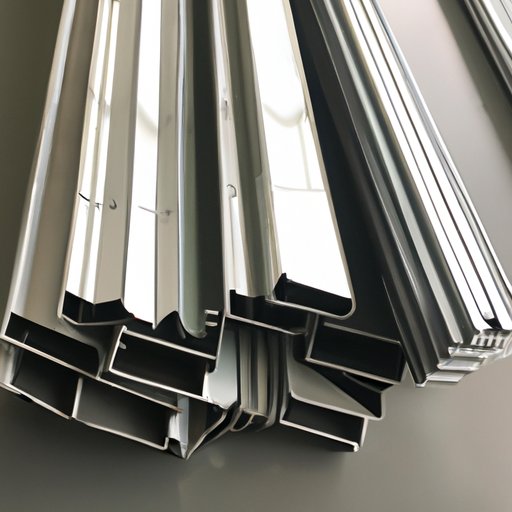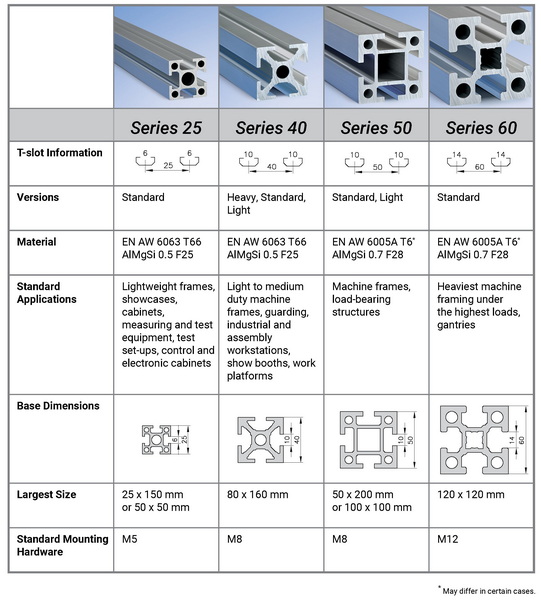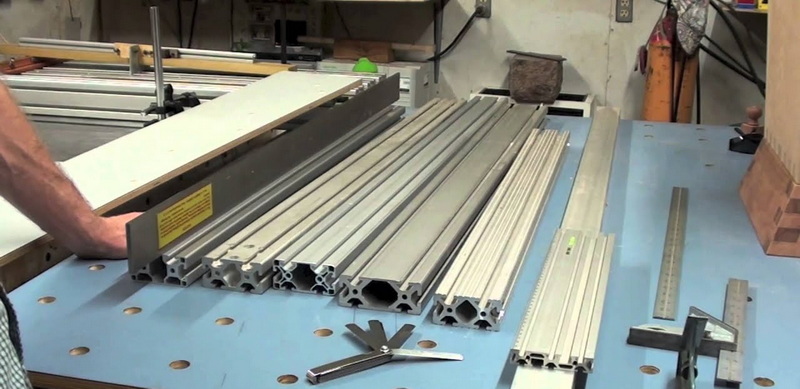Content Menu
● Introduction to Aluminum Extrusions
● The Aluminum Extrusion Process
● Factors Affecting the Straightness of Aluminum Extrusions
● Measuring Straightness in Aluminum Extrusions
● Straightness Tolerances in Aluminum Extrusions
● Techniques for Improving Straightness
● Applications Requiring High Straightness
● Designing with Aluminum Extrusions
● Future Trends in Aluminum Extrusion Technology
● Conclusion
● Frequently Asked Questions
>> Q1: What is the typical straightness tolerance for aluminum extrusions?
>> Q2: How does the alloy composition affect the straightness of aluminum extrusions?
>> Q3: What methods are used to measure the straightness of aluminum extrusions?
>> Q4: Can the straightness of an aluminum extrusion be improved after production?
>> Q5: How does the extrusion process itself affect the straightness of the final product?
Introduction to Aluminum Extrusions
Aluminum extrusions have become an integral part of various industries, from construction and automotive to aerospace and consumer goods. The versatility, strength-to-weight ratio, and corrosion resistance of aluminum make it an ideal material for countless applications. However, one crucial aspect that often comes into question is the straightness of these extrusions. In this comprehensive guide, we'll delve deep into the world of aluminum extrusions, exploring their manufacturing process, factors affecting straightness, measurement techniques, and applications where precision is paramount.

The Aluminum Extrusion Process
To understand the straightness of aluminum extrusions, it's essential to first grasp the manufacturing process. Aluminum extrusion is a technique used to create objects with a fixed cross-sectional profile. The process involves pushing heated aluminum through a die of the desired cross-section.
The basic steps of the aluminum extrusion process include:
1. Preheating: Aluminum billets are heated to temperatures between 800°F to 925°F (425°C to 500°C).
2. Lubrication: The die and other tools are lubricated to reduce friction.
3. Extrusion: The heated aluminum is forced through the die using hydraulic rams.
4. Cooling: The extruded profile is cooled using air or water.
5. Stretching: The profile is stretched to improve straightness and relieve internal stresses.
6. Cutting: The extrusion is cut to the desired length.
7. Heat treatment: Profiles may undergo heat treatment to enhance mechanical properties.
8. Finishing: Additional processes like anodizing or painting may be applied.
Factors Affecting the Straightness of Aluminum Extrusions
Several factors can influence the straightness of aluminum extrusions:
1. Alloy composition: Different aluminum alloys have varying properties that can affect their behavior during extrusion.
2. Die design: The design and quality of the extrusion die play a crucial role in determining the final shape and straightness.
3. Extrusion temperature: Proper temperature control is essential for maintaining consistent material flow.
4. Extrusion speed: The rate at which aluminum is pushed through the die can impact straightness.
5. Cooling method: Uneven cooling can lead to warping or bowing of the extrusion.
6. Stretching process: The stretching step helps improve straightness but must be carefully controlled.
7. Handling and storage: Improper handling or storage can cause deformation in finished extrusions.
Measuring Straightness in Aluminum Extrusions
Ensuring the straightness of aluminum extrusions is crucial for many applications. Various methods are employed to measure and verify straightness:
1. Optical comparators: These devices use light and magnification to compare the profile against a standard.
2. Coordinate Measuring Machines (CMM): CMMs provide highly accurate 3D measurements of extrusion profiles.
3. Laser scanning: Advanced laser systems can quickly measure the entire length of an extrusion for deviations.
4. Straightness gauges: These specialized tools can measure straightness along the length of an extrusion.
5. Dial indicators: Used in conjunction with a precision surface plate to measure deviations.

Straightness Tolerances in Aluminum Extrusions
The acceptable level of straightness can vary depending on the application and industry standards. Typical straightness tolerances for aluminum extrusions are:
- For lengths up to 3 meters: ±0.5 mm per meter
- For lengths between 3 and 6 meters: ±0.7 mm per meter
- For lengths over 6 meters: ±1.0 mm per meter
However, tighter tolerances can be achieved with specialized processes and additional straightening techniques.
Techniques for Improving Straightness
When greater precision is required, several techniques can be employed to improve the straightness of aluminum extrusions:
1. Controlled stretching: Carefully applied tension can help straighten extrusions.
2. Roller straightening: Passing the extrusion through a series of rollers can correct minor deviations.
3. Press straightening: For more severe bends, hydraulic presses can be used to apply localized pressure.
4. Heat treatment: Proper heat treatment can relieve internal stresses that may cause warping.
5. Machining: In some cases, machining the surface can achieve the required straightness, though this may not be suitable for all applications.
Applications Requiring High Straightness
Many industries rely on straight aluminum extrusions for critical applications:
1. Aerospace: Structural components and interior fittings require high precision.
2. Automotive: Frame members and body panels need to meet strict tolerances.
3. Construction: Curtain wall systems and structural framing demand straight profiles for proper assembly.
4. Machinery: Guide rails and linear motion systems require exceptional straightness.
5. Solar energy: Mounting systems for solar panels need to be straight for optimal performance.
Designing with Aluminum Extrusions
When designing products or structures that utilize aluminum extrusions, consider the following:
1. Choose the right alloy: Select an aluminum alloy that offers the best balance of extrudability and mechanical properties for your application.
2. Optimize cross-section design: Work with extrusion experts to design profiles that minimize the risk of warping or twisting.
3. Specify appropriate tolerances: Ensure that the specified straightness tolerances are achievable and necessary for the application.
4. Consider post-extrusion processes: Factor in any additional treatments or machining that may affect the final straightness.
5. Plan for proper handling and storage: Design packaging and handling procedures that protect the straightness of the extrusions.
Future Trends in Aluminum Extrusion Technology
As technology advances, we can expect to see improvements in the straightness and overall quality of aluminum extrusions:
1. Advanced simulation software: Better modeling of the extrusion process will lead to improved die designs and process parameters.
2. Smart manufacturing: Integration of AI and machine learning will optimize production processes in real-time.
3. New alloy development: Research into novel aluminum alloys may yield materials with improved extrudability and dimensional stability.
4. Enhanced measurement techniques: More accurate and efficient methods for measuring straightness will emerge.
5. Sustainable practices: Focus on recycling and energy-efficient extrusion processes will drive innovation in the industry.
Conclusion
The straightness of aluminum extrusions is a critical factor in many applications, influencing both the functionality and aesthetics of the final product. By understanding the extrusion process, factors affecting straightness, and measurement techniques, designers and engineers can make informed decisions when specifying aluminum extrusions for their projects. As technology continues to advance, we can expect even greater precision and consistency in the production of straight aluminum extrusions, opening up new possibilities for innovative designs and applications across various industries.

Frequently Asked Questions
Q1: What is the typical straightness tolerance for aluminum extrusions?
A1: Typical straightness tolerances for aluminum extrusions vary depending on the length. For extrusions up to 3 meters, the tolerance is usually ±0.5 mm per meter. For lengths between 3 and 6 meters, it's ±0.7 mm per meter, and for lengths over 6 meters, it's ±1.0 mm per meter. However, tighter tolerances can be achieved with specialized processes.
Q2: How does the alloy composition affect the straightness of aluminum extrusions?
A2: The alloy composition can significantly impact the straightness of aluminum extrusions. Different alloys have varying properties such as strength, ductility, and thermal expansion coefficients. These properties influence how the material behaves during the extrusion process and subsequent cooling. Some alloys are more prone to warping or bowing than others, so selecting the right alloy for your application is crucial.
Q3: What methods are used to measure the straightness of aluminum extrusions?
A3: Several methods are used to measure the straightness of aluminum extrusions, including optical comparators, Coordinate Measuring Machines (CMM), laser scanning systems, straightness gauges, and dial indicators. The choice of method often depends on the required accuracy, the length of the extrusion, and the production volume.
Q4: Can the straightness of an aluminum extrusion be improved after production?
A4: Yes, the straightness of an aluminum extrusion can be improved after production using various techniques. These include controlled stretching, roller straightening, press straightening, and heat treatment. In some cases, machining can also be used to achieve the required straightness, although this may not be suitable for all applications.
Q5: How does the extrusion process itself affect the straightness of the final product?
A5: The extrusion process has a significant impact on the straightness of the final product. Factors such as die design, extrusion temperature, extrusion speed, and cooling method all play crucial roles. Proper control of these parameters is essential for producing straight extrusions. Additionally, the stretching process that occurs after extrusion is specifically designed to improve straightness and relieve internal stresses that could cause warping.






















